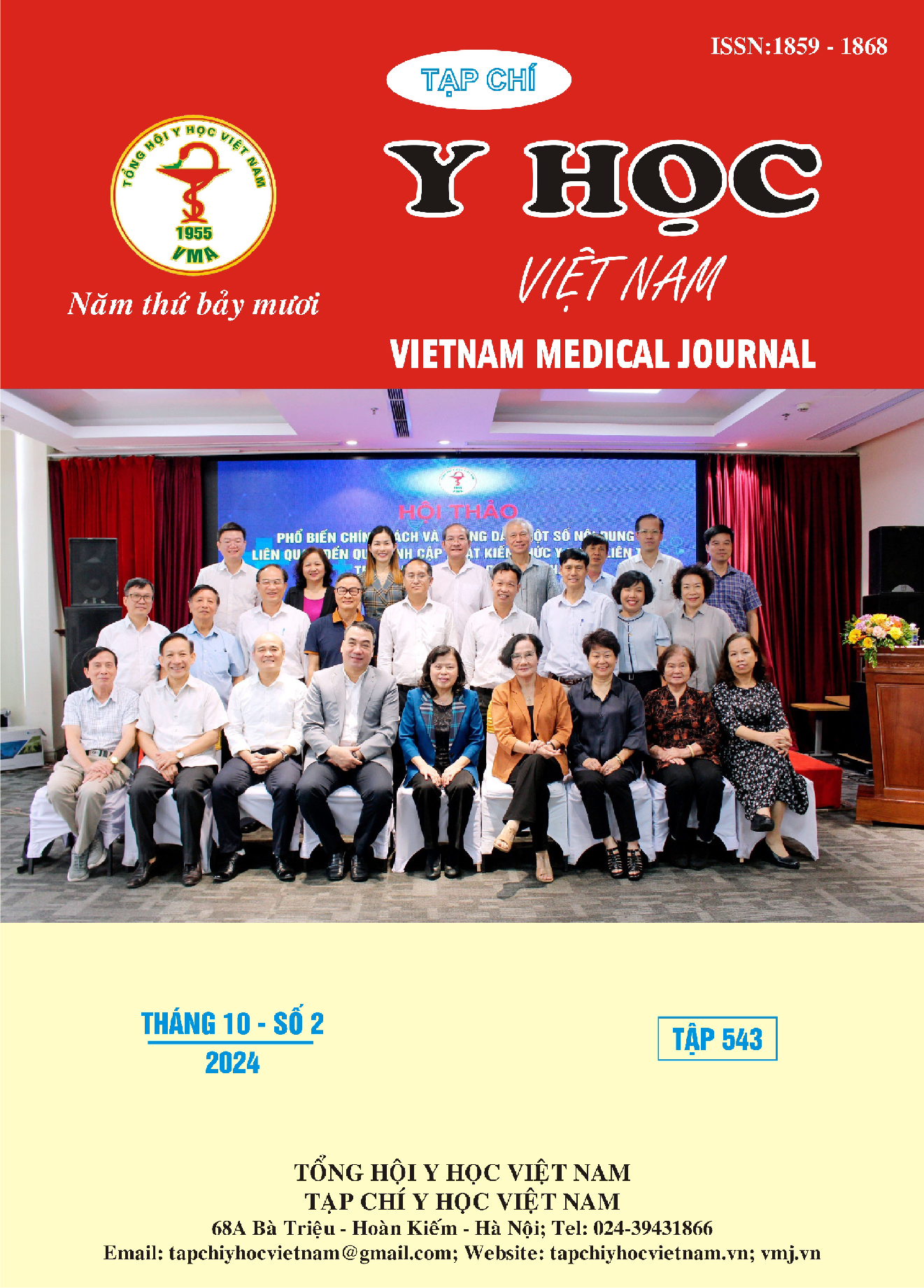TỶ LỆ, ĐẶC ĐIỂM LÂM SÀNG VÀ CẬN LÂM SÀNG CỦA BỆNH NHÂN VIÊM PHỔI CỘNG ĐỒNG NHẬP VIỆN DO NHÓM VI KHUẨN PES
Nội dung chính của bài viết
Tóm tắt
Mục tiêu: Mô tả tỷ lệ, đặc điểm lâm sàng và cận lâm sàng của bệnh nhân viêm phổi cộng đồng nhập viện do nhóm vi khuẩn PES tại Bệnh viện Đa khoa Trung Ương Cần Thơ và Bệnh viện Trường Đại học Y Dược Cần Thơ. Phương pháp nghiên cứu: Thiết kế nghiên cứu mô tả cắt ngang 200 trường hợp VPCĐ nhập viện có kết quả nuôi cấy mẫu bệnh phẩm đường hô hấp dưới dương tính từ tháng 08/2022 đến tháng 05/2024. Kết quả: VPCĐ nhập viện do PES là 26%. Các đặc điểm thường gặp ở bệnh nhân viêm phổi cộng đồng nhập viện do vi khuẩn kháng thuốc PES gồm tuổi > 65 (78,8%); nữ (71,2%); suy hô hấp (69,2%); PSI IV–V (73,1%); CURB 65 ≥ 3 điểm (69,2%), tổn thương đa thùy phổi trên Xquang ngực (90,4%). Kết luận: Tỷ lệ nhiễm vi khuẩn PES trong VPCĐ nhập viện đang gia tăng. Bệnh nhân nhiễm nhóm vi khuẩn PES có những đặc điểm lâm sàng chuyên biệt cần lưu ý để chẩn đoán sớm.
Chi tiết bài viết
Từ khóa
Viêm phổi cộng đồng, PES, đặc điểm lâm sàng, cận lâm sàng
Tài liệu tham khảo
2. Cillóniz C, Dominedò C, Torres A. Multidrug-Resistant Gram-Negative Bacteria in Community-Acquired Pneumonia. Crit Care. 2019 Mar 9;23(1):79. doi: 10.1186/s13054-019-2371-3.
3. Prina E, Ranzani OT, Polverino E, et al. A. Risk factors associated with potentially antibiotic-resistant pathogens in community-acquired pneumonia. Ann Am Thorac Soc. 2015 Feb;12 (2):153-60. doi: 10.1513/ AnnalsATS.201407-305OC.
4. Mandell LA, Wunderink RG, Anzueto A, Bartlett JG, Campbell GD, Dean NC, Dowell SF, File TM Jr, Musher DM, Niederman MS, Torres A, Whitney CG; Infectious Diseases Society of America; American Thoracic Society. Infectious Diseases Society of America/American Thoracic Society consensus guidelines on the management of community-acquired pneumonia in adults. Clin Infect Dis. 2007 Mar 1;44 Suppl 2(Suppl 2): S27-72. doi: 10.1086/511159.
5. Restrepo MI, Babu BL, Reyes LF, et al. Burden and risk factors for Pseudomonas aeruginosa community-acquired pneumonia: a multinational point prevalence study of hospitalised patients. European Respiratory Journal. 2018, 52: 1701190; DOI: 10.1183/13993003.01190-2017
6. Ishida T, Ito A, Washio Y, Yamazaki A, Noyama M, Tokioka F, Arita M. Risk factors for drug-resistant pathogens in immunocompetent patients with pneumonia: Evaluation of PES pathogens. J Infect Chemother. 2017, 23(1):23-28. doi: 10.1016/j.jiac.2016.09.002. Epub 2016 Oct 8. PMID: 27729192.
7. Shorr AF, Zilberberg MD, Reichley R, et al. Validation of a clinical score for assessing the risk of resistant pathogens in patients with pneumonia presenting to the emergency department. Clin Infect Dis. 2012; 54(2):193-8. doi: 10.1093/cid/cir813.
8. Aliberti S, Di Pasquale M, Zanaboni AM, Cosentini R, Brambilla AM, Seghezzi S, Tarsia P, Mantero M, Blasi F. Stratifying risk factors for multidrug-resistant pathogens in hospitalized patients coming from the community with pneumonia. Clin Infect Dis. 2012; 54(4):470-8. doi: 10.1093/cid/cir840.
9. Cavallazzi R, Furmanek S, Arnold FW, et al. The burden of community-acquired pneumonia requiring admission to ICU in the United States. Chest 2020; 158: 1008–1016. doi:10.1016/j.chest.2020.03.051.
10. Leem AY, Jung WJ, Kang YA, et al. Comparison of methicillin-resistant Staphylococcus aureus community-acquired and healthcare-associated pneumonia. Yonsei Med J. 2014; 55(4):967-74. doi: 10.3349/ ymj.2014.55.4.967.


